Results
-
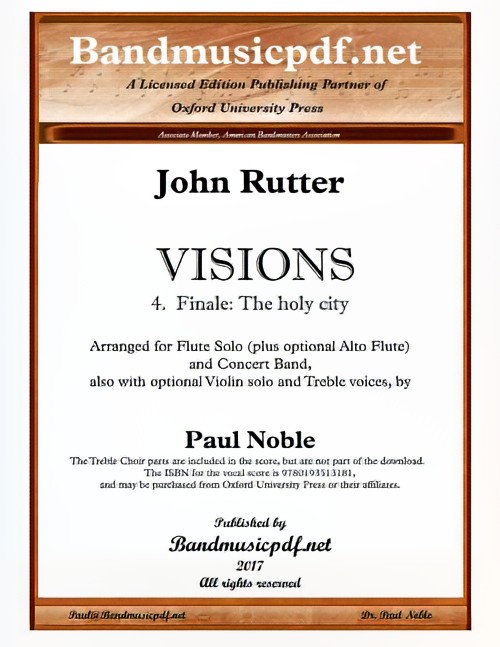 £95.00
£95.00Finale: The Holy City (from Visions) (Flute or Violin Solo with Concert Band and Optional Treble Choir - Score and Parts) - Rutter, John - Noble, Paul
Visions is one of John Rutter's most recent compositions (2016). It was written for violin solo, treble voice choir, strings and harp. This arrangement maintains the violin solo as an option, but it is presented as a flute (and optionally with a movement for alto flute) solo with band. The vocal parts are included as an option, but the arrangement is also scored so that it may be performed without the treble choir. Visions is a tribute to Jerusalem, with the four movements titled: 1. Jerusalem the blessed; 2. Arise, shine; 3. Lament for Jerusalem; 4. Finale: The holy city. A showcase for the soloist, the depth of meaning and feeling in this music will make it an important addition to the repertoire of the Concert/Wind Band.
Estimated dispatch 7-14 working days
-
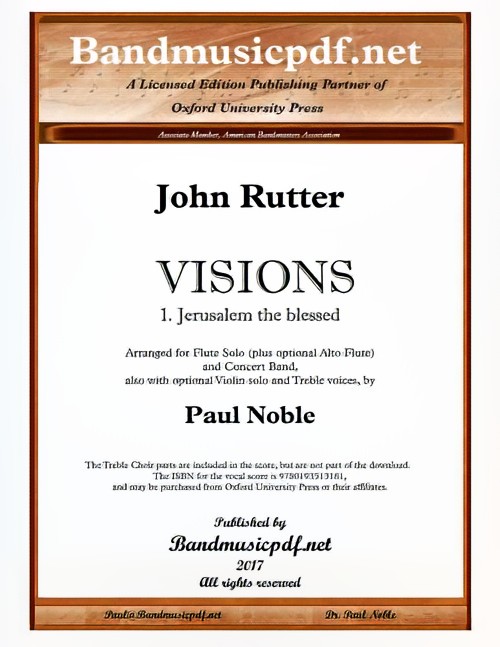 £75.00
£75.00Jerusalem the Blessed (from Visions) (Flute or Violin Solo with Concert Band and Optional Treble Choir - Score and Parts) - Rutter, John - Noble, Paul
Visions is one of John Rutter's most recent compositions (2016). It was written for violin solo, treble voice choir, strings and harp. This arrangement maintains the violin solo as an option, but it is presented as a flute (and optionally with a movement for alto flute) solo with band. The vocal parts are included as an option, but the arrangement is also scored so that it may be performed without the treble choir. Visions is a tribute to Jerusalem, with the four movements titled: 1. Jerusalem the blessed; 2. Arise, shine; 3. Lament for Jerusalem; 4. Finale: The holy city. A showcase for the soloist, the depth of meaning and feeling in this music will make it an important addition to the repertoire of the Concert/Wind Band.
Estimated dispatch 7-14 working days
-
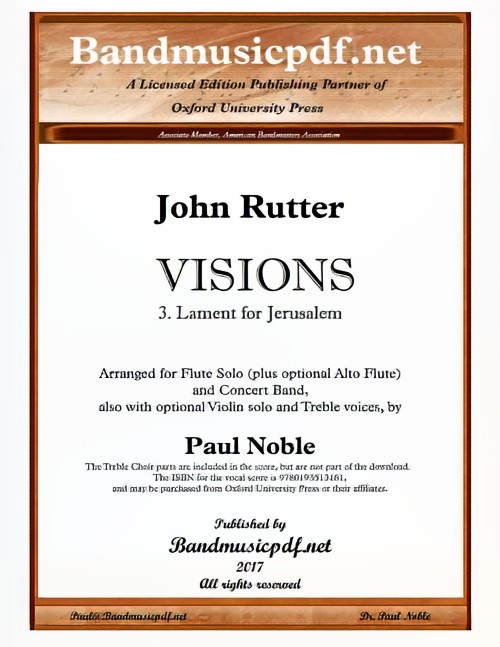 £100.00
£100.00Lament for Jerusalem (from Visions) (Flute or Violin Solo with Concert Band and Optional Treble Choir - Score and Parts) - Rutter, John - Noble, Paul
Visions is one of John Rutter's most recent compositions (2016). It was written for violin solo, treble voice choir, strings and harp. This arrangement maintains the violin solo as an option, but it is presented as a flute (and optionally with a movement for alto flute) solo with band. The vocal parts are included as an option, but the arrangement is also scored so that it may be performed without the treble choir. Visions is a tribute to Jerusalem, with the four movements titled: 1. Jerusalem the blessed; 2. Arise, shine; 3. Lament for Jerusalem; 4. Finale: The holy city. A showcase for the soloist, the depth of meaning and feeling in this music will make it an important addition to the repertoire of the Concert/Wind Band.
Estimated dispatch 7-14 working days
-
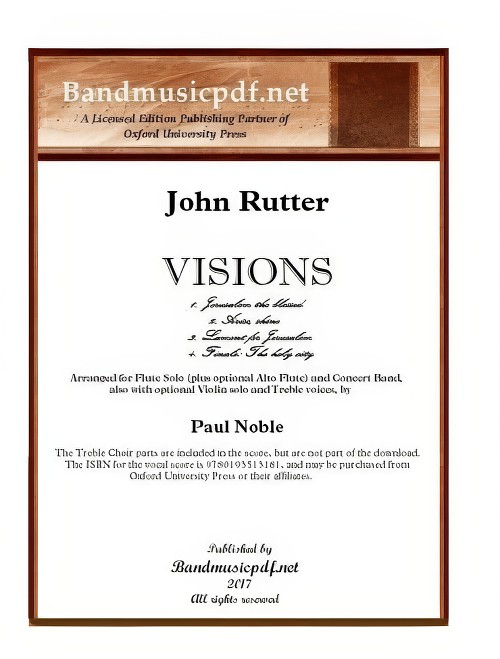 £310.00
£310.00Visions (Flute or Violin Solo with Concert Band and Optional Treble Choir - Score and Parts) - Rutter, John - Noble, Paul
Visions is one of John Rutter's most recent compositions (2016). It was written for violin solo, treble voice choir, strings and harp. This arrangement maintains the violin solo as an option, but it is presented as a flute (and optionally with a movement for alto flute) solo with band. The vocal parts are included as an option, but the arrangement is also scored so that it may be performed without the treble choir. Visions is a tribute to Jerusalem, with the four movements titled: 1. Jerusalem the blessed; 2. Arise, shine; 3. Lament for Jerusalem; 4. Finale: The holy city. A showcase for the soloist, the depth of meaning and feeling in this music will make it an important addition to the repertoire of the Concert/Wind Band.
Estimated dispatch 7-14 working days
-
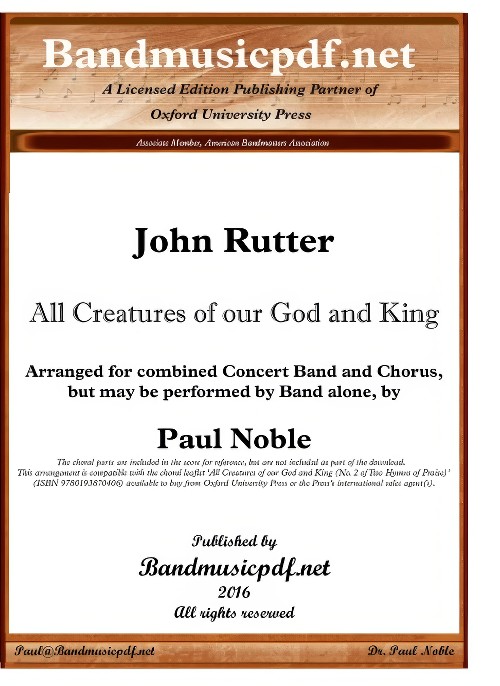 £110.00
£110.00All Creatures of our God and King (Concert Band with Optional Choir - Score and Parts) - Rutter, John - Noble, Paul
All Creatures of Our God and King is an English Christian Easter hymn by William Henry Draper, based on a poem by St. Francis of Assisi. It was first published in a hymn book in 1919. The words of the hymn were initially written by St. Francis of Assisi in 1225 in the Canticle of the Sun poem, which was based on Psalm 148. The words were translated into English by William Draper, who at the time was rector of a Church of England parish church at Adel near Leeds. Draper paraphrased the words of the Canticle and set them to music. It is not known when Draper first wrote the hymn but it was between 1899 and 1919. The hymn is currently used in 179 different hymn books. The words written by St Francis are some of the oldest used in hymns after Father We Praise Thee, written in 580 AD. Like Ye Watchers and Ye Holy Ones, Draper's text is usually set to the tune of Lasst uns erfreuen, a German Easter hymn published by Friedrich Spee in 1623 in his book Auserlesene Catholische Geistliche Kirchengesng. This tune became widespread in English hymn books starting with a 1906 arrangement by Ralph Vaughan Williams. John Rutter also wrote a piece of music for the hymn. Despite the hymn being initially written by Draper for Whitsun (the Anglican and English designation for Pentecost), it is mostly used in the ealier weeks of the Easter season. This setting by John Rutter begins with a rousing fanfare for trumpets and trombone, which segues in to the first verse of the hymn. There are seven verses included, but the director has the option of deleting verses as desired.
Estimated dispatch 7-14 working days
-
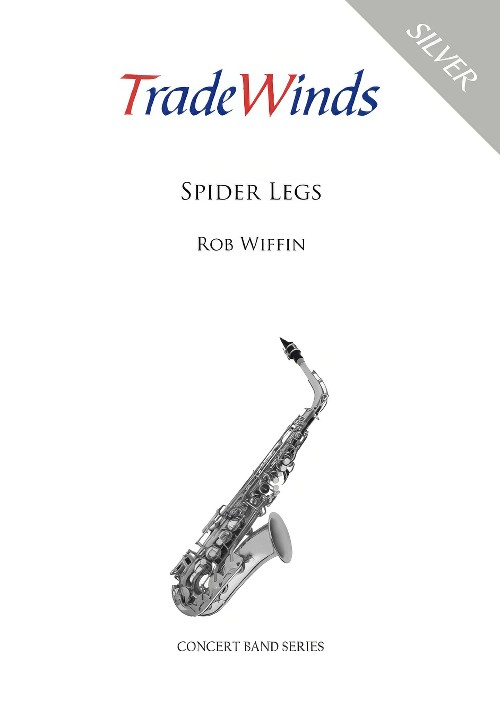 £54.95
£54.95Spider Legs (Concert Band - Score and Parts) - Wiffin, Rob
Spider Legs is a vibrant Latin dance number. Although I have used Latin rhythms in pieces in recent years this is the first time I have returned wholeheartedly to one of my favourite types of music since I wrote Tiptoe Tune in 2001. Typically I wrote it when I should have been writing something else but I really enjoyed going back to these rhythms. Stylistically Spider Legs can best be described I suppose as 'Merengue House' but perhaps it is better without any description! It was composed in 2014, shortly after the birth of my granddaughter Emma Louisa who was nicknamed 'Spider Legs' at the time and the name seemed to fit the music so well that I could not resist it.
Estimated dispatch 7-14 working days
-
 £10.95
£10.95Spider Legs (Concert Band - Score Only) - Wiffin, Rob
Spider Legs is a vibrant Latin dance number. Although I have used Latin rhythms in pieces in recent years this is the first time I have returned wholeheartedly to one of my favourite types of music since I wrote Tiptoe Tune in 2001. Typically I wrote it when I should have been writing something else but I really enjoyed going back to these rhythms. Stylistically Spider Legs can best be described I suppose as 'Merengue House' but perhaps it is better without any description! It was composed in 2014, shortly after the birth of my granddaughter Emma Louisa who was nicknamed 'Spider Legs' at the time and the name seemed to fit the music so well that I could not resist it.
Estimated dispatch 7-14 working days
-
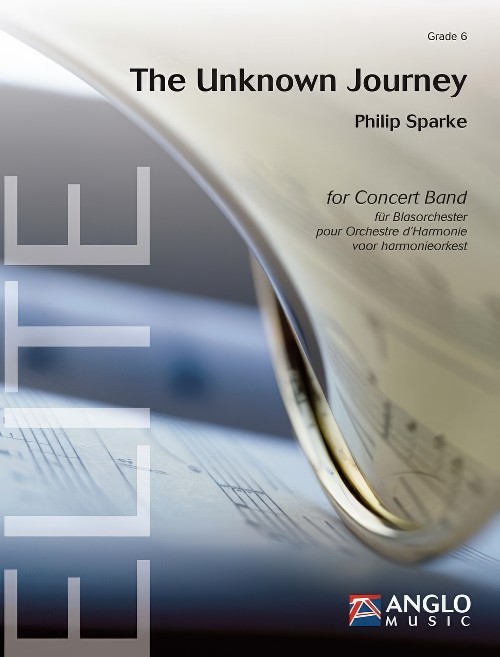 £256.99
£256.99The Unknown Journey (Concert Band - Score and Parts) - Sparke, Philip
The Unknown Journey was commissioned by Kwansei Gakuin University Symphony Band which was established in 1954 and has grown to become one of the top college bands in Japan. The composer chose the title as the piece seemed to create its own momentum as it developed, starting slowly and continuously increasing the tempo. Towards the end it gradually transmogrifies into the closing bars of Ravel's La Valse, a piece which perfectly characterises the idea of unstoppable momentum. The Unknown Journey was commissioned by Kwansei Gakuin University Symphony Band which was established in 1954 and has grown to become one of the top college bands in Japan. The composer chose the title as the piece seemed to create its own momentum as it developed, starting slowly and continuously increasing the tempo. Towards the end it gradually transmogrifies into the closing bars of Ravel's La Valse, a piece which perfectly characterises the idea of unstoppable momentum.Duration: 11:30
Estimated dispatch 7-14 working days
-
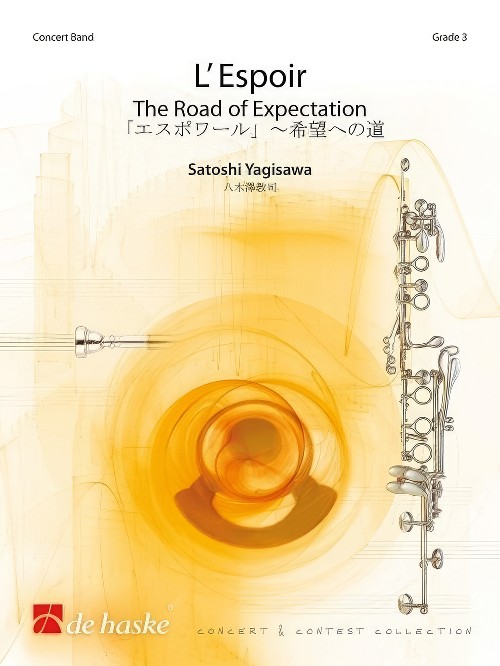 £76.99
£76.99L'Espoir (The Road of Expectation) (Concert Band - Score and Parts) - Yagisawa, Satoshi
The renowned Japanese composer Satoshi Yagisawa was given three separate tasks for this commission: it should be a short, attractive piece of music that is easy to listen to; it should be suitable as a choral exercise; and it should be fitting as an encore for the regular annual concert of the client. So it was that Yagisawa composed a glorious, warm-sounding work that satisfies all three requirements, and additionally serves as an excellent intermezzo in any concert.Duration: 3:45
Estimated dispatch 7-14 working days
-
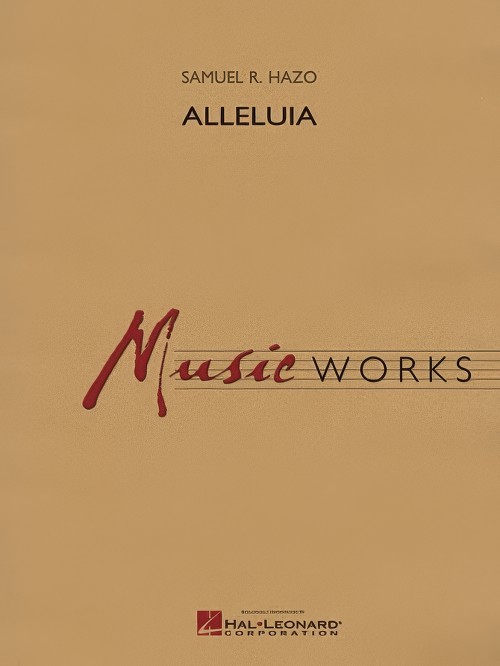 £118.99
£118.99Alleluia (Concert Band - Score and Parts) - Hazo, Samuel R.
Alleluia is a convergence of hauntingly emotive themes that culminate in breath-taking builds. The Kalamazoo Gazette described it as the pinnacle of the concert in which it was premiered, adding that Hazo's master composition takes the listener from "...bells and chimes to full Hosannas. The result was transfiguring! It first fades like a sunset, then explodes in white light, bringing the audience to their feet." Written for mature ensembles, this work will have a powerful impact on the performers as well as all who hear it.Duration: 8.00
Estimated dispatch 7-14 working days
